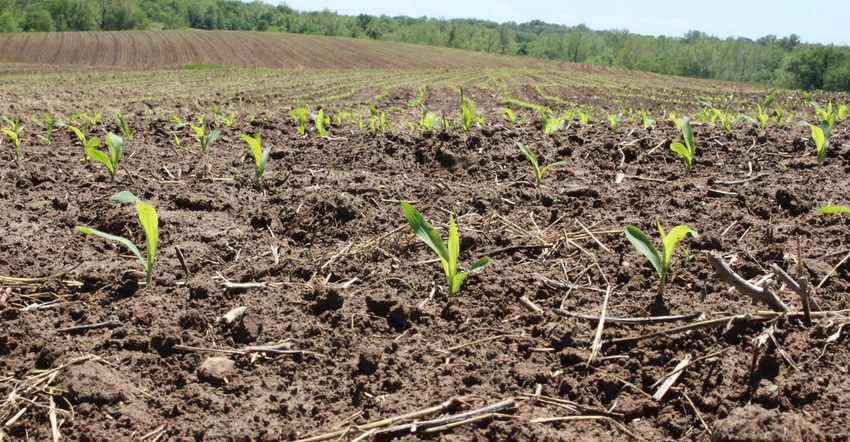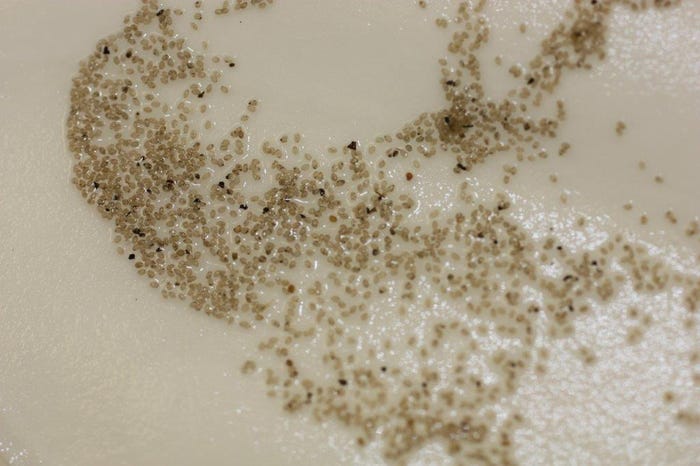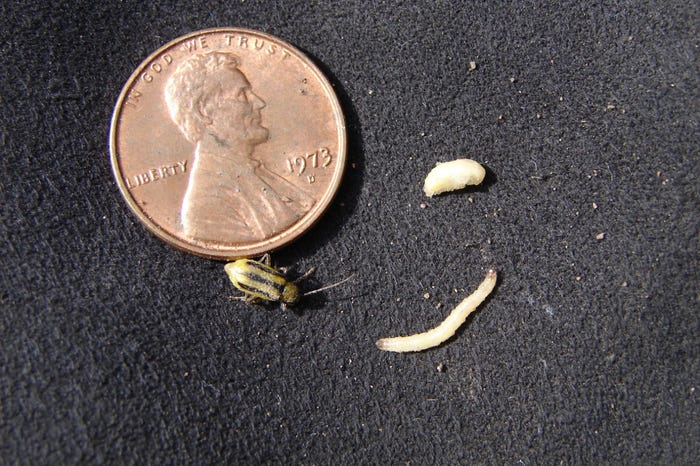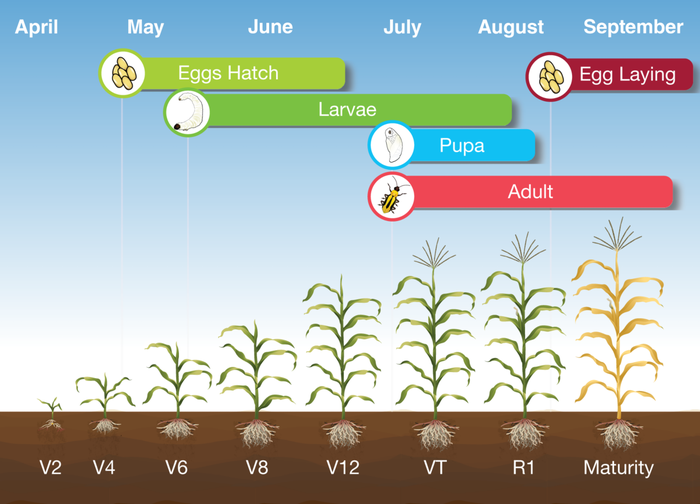June 3, 2022

Egg Hatching Signs
It is a commonly held belief that the presence of fireflies in the evening is a signal that corn rootworm (CRW) eggs (Figure 1) might be hatching. However, the presence of these insects does not always mean that CRW egg hatch is occurring.2,3

CRW Eggs
The accumulation of growing degree days (GDDs) is a more accurate determination of CRW egg hatch. Research has shown that about 50% of CRW eggs may hatch from 684 to 767 accumulated GDDs (base 52°F).3 Local GDD information can generally be accessed from university extension weather specialists and/or websites. The website Insectforecast provides useful information on the timing of potential CRW damage as well as that of other insects.
Larval Identification
Each CRW larva (Figure 2) passes through three developmental stages or instars before pupating to become an adult CRW beetle and each instar period lasts from 7-10 days.

CRW larvae, pupa and adult stages.

CRW larvae, pupa and adult stages.
The larvae are slender, cream-colored, and have brown heads and a dark plate on the top side of the tail. Newly hatched or first instar CRW larvae are very small (less than 1/8 inch long) and may go unnoticed. First identification may occur when they reach the second instar and mature third instar larvae are about ½-inch long. After the third instar, the pupa forms. The pupa is white, somewhat translucent, and is sessile and dormant (Figure 3).

The CRW life cycle

The CRW life cycle
Scouting Procedure for Larvae and Root Injury Evaluation
Scouting for CRW larvae should occur from late-May through mid-June depending on the region, planting date, and crop stage. Scouting procedures for CRW larvae include digging plants from several areas of the field and placing them into a bucket of water for washing. If CRW larvae are present, they should float to the surface. Early instars are small and can be easily mistaken for debris. Practically speaking, it is too late to control CRW larvae when they are discovered during mid-season (June-July) root digs; however, a root damage evaluation can be undertaken by looking at the roots and determining how much root tissue is missing.
Root injury from CRW is greatest about the time when most larvae have completed the third larval stage, which is often around the tasseling stage of corn in July or August. The third larval stage can occur as early as June with above-average temperatures in spring and early summer. For evaluation of root injury, digging roots too early can underestimate the amount of root injury that can be present while roots dug too late after most adults have emerged are often more difficult to wash and rate due to root regrowth. There is usually a 2- to 3-week window that is optimum for conducting root digs.
Fields without soil-applied insecticides, no B.t. CRW protection, or those with single modes of B.t. protection should be priorities for scouting. Scouting procedures include walking through a field in a “W” formation to dig two root balls at the end of each W leg for a total of 10 corn root balls. Carry the roots out of the field to a convenient location and place them into a bucket of water for washing. The Iowa State University 0-3 Node Injury Scale (NIS) provides a useful method to help quantify the amount of larval feeding injury to corn roots.1
Rescue Treatments
In general, soil insecticidal rescue treatments after the discovery of CRW larval feeding is of little value because of timing and application difficulty. However, if CRW larvae are discovered before corn plants are too large to cultivate, a granular or liquid insecticide applied ahead of cultivator shovels during a layby cultivation may provide some control. There is no established economic threshold for CRW larvae; however, agronomists have advised applying a rescue treatment if there are two or three CRW larvae per plant.4,5 Farmers with pivot irrigation systems may gain some control by applying a labeled insecticide through the irrigation system. Ample water (irrigation or rain) is needed to move the insecticide into the root system. If practical, a delayed insecticide application may provide better control because the insecticide is being applied after egg hatch compared to an at-planting application that can lose efficacy before the insecticide is most needed for control.
Planting-time Protection
In most situations, growers should be proactive in developing their CRW management plans. The best protection against damage from CRW larvae feeding is the use of B.t.-traited corn products with multiple modes of action such as SmartStax® technology. Soil-applied insecticides applied at planting, or if practical, closer to egg hatch by cultivation or irrigation, should be considered if these products are not used and the potential for CRW feeding exists.4,5
Source: DeKalb Asgrow, which is solely responsible for the information provided and is wholly owned by the source. Informa Business Media and all its subsidiaries are not responsible for any of the content contained in this information asset.
You May Also Like




